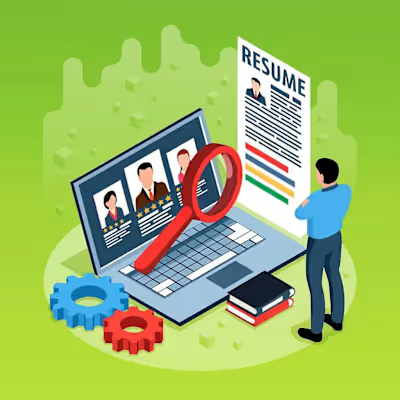Comprehensive CV Writing Guide for Assignment Guidance
Your CV is not just a piece of paper; it is your primary chance to impress prospective employers. How you describe your skills, experience, and qualifications can determine whether you progress to the next round of the hiring process. Whether you’re applying to a top-notch organization or a start-up, your CV writing can set you apart from other candidates.
A well-developed CV is your marketing tool. It highlights your merits and demonstrates why you’re the right fit for the job. When creating your CV, make sure to include the essential elements that employers seek. This provides a comprehensive look at your work life and proves that you possess the qualifications and abilities for the job.
The seven most important components of a professional CV are: your professional summary, work experience, skills, education and certifications, ATS-friendly formatting, contact information, and any extra sections detailing your extracurricular activities or honors.
When we put these components together in this guide, we will deconstruct each one and describe their context in making your CV stand out. We will also give professional tips on building resumes to make the CV stand out, and some of the main pitfalls to be avoided on the CV. You will also be given tips on writing a CV, which will instantly help your CV and thereby give you a higher possibility of getting your dream job.
1. Professional Summary: The Opening Statement
The first line of your CV is called the professional summary. It provides signs to hiring managers about your experience and other capabilities that you may offer them. This is the part that should be short but meaningful and focused on the position where you are applying to work. You are getting this first opportunity to grab attention, and you have to make use of it. One of the general mistakes that a person can make includes writing a vague or generic one. Do not feed this section with irrelevant information that will not be of any value; also, make sure that your conclusion is as per the position you are applying for.
Making It Specific and Relevant
In order to enhance your CV immediately, make the summary short- it should be 2 to 3 lines. Make use of powerful, actionable, and dissimilar terms on your worth to the business. Stick to your best abilities and unique features in comparison with the other candidates. It becomes specific and relevant by tailoring it according to a specific job application.
2. Work Experience: Highlighting Your Achievements
The heart of the CV lies in the work experience part. Your CV should highlight what you have accomplished and how you contributed to previous organizations. Employers will be interested in how your past jobs qualify you for the role they are offering. According to professional resume-building tips, focus on your achievements rather than just listing duties. Clearly describe your work experience to show the value you can bring to the new job. Have particular instances of how you have benefited past employers, and state those accomplishments when possible in quantifiable terms. An example would be mentioning how you increased the sales by 20 percent or how you led a group of 10 people.
Focusing on Achievements
Do not describe each job in great detail. Rather, discuss the most pertinent experiences to show how you will be qualified to take up the job. Do not duplicate tasks carried on in an assignment to another job- point out how each of the jobs contributed to your career development.
3. Skills Section: Demonstrating Your Core Abilities
The skills section highlights both your technical and soft skills. It is essential to demonstrate that you have the required abilities to perform the job. This section allows you to show that, beyond work experience, you have the specific knowledge that makes you a strong candidate for the position. The easiest way to enhance your CV writing is to classify your skills into technical and soft skills. Compare them with the required work in the job description. Specify what your skills are, avoid using general words like team player or good communicator, but be sure to use them with proof. It can help hiring managers get a better idea of your abilities by mentioning your competencies with examples of your past work or education.
Classifying Skills
One of the most popular mistakes to avoid is putting a lot of irrelevant skills or using outdated technologies on your CV. Mention only the skills that are relevant to the position you are applying for. Also, it is better to avoid general claims or generic cliches unless there are real examples applied to them.
4. Education and Certifications: Establishing Your Qualifications
The education section reveals the academic part and your various certifications. It helps prove that you possess the required qualifications to be successful at the job. Employers wish you to demonstrate that you have a foundation in education to complement your work background. The professional resume building tips recommend that you have the highest level of education that you have attained first, and then have the rest of the other classes and any other certification or training that you might have. Note down specific coursework, scholarly projects, or accomplishments related to the job in case it is relevant.
Prioritize Relevant Education
It is best not to have a long list of irrelevant courses or certifications that do not help you prove that you are fit to fill the position. Make sure that information such as graduation and certification expiry dates is up-to-date and accurate as well. This part must sketch a clear educational history, stating where you studied and when, without the reader getting flooded with unnecessary information.
5. ATS-Friendly Formatting: Making Your CV Scan-Proof
An increasing number of companies are applying Applicant Tracking Systems (ATS) to filter out CVs before they are seen by a human recruiter at all. The ATS-friendly CV is the document that makes sure your application does not go into the garbage but is seen by the right person.
Simple, Clean Formatting
Simple clean formatting will make your CV ATS-friendly. Use simple fonts like Arial or Calibri. Avoid complex tables, headings, or footings, as they can confuse ATS software. Not all layouts or images are compatible with ATS. Keep your CV design simple and clean.
It is also crucial to include the keywords from the job description. This will increase your chances of passing through ATS filters. Finally, upload your CV in either a Word document or PDF format, as specified by the employer. This will ensure that your CV writing is read correctly by ATS.
6. Contact Information and Links: Ensuring Accessibility
Your contact details must be readily available, and they must be current. It would be best to add your full name, phone number, and email addresses, LinkedIn profile, personal websites or portfolios links, and so on to this section.
Professional Contact Information
To create your CV, choose a professional email (as firstname.lastname@gmail.com, but not as something that can be considered unprofessional). Provide a link, in case you have a LinkedIn profile, portfolio, or individual website on which you show your work or professional life. This may give additional information on your qualifications and achievements. The most typical errors that are made when filling this section are the failure to renew the contact data, having an amateurish email address, or sharing unwanted personal data with it, like your social security number or your date of birth.
7. Additional Sections: Showcasing Extra Value
You can add sections such as volunteer, awards, publications, or languages you speak to help you stand out and describe your qualifications fully. These areas can also show abilities and experiences not part of your daily work but useful to the employer. List the languages you speak in your CV. This is especially useful when applying for jobs abroad. If you have any honors or acknowledgments, include them as well. This shows that your skills and contributions are validated by others. Your CV can also be expanded by the inclusion of any volunteer work related to your professional ambition.
Relevant Additional Information
It is also advisable not to overcrowd your CV with so many other sections that do not make it any useful to the particular unform that you are presenting the CV to. Anything that is included should be relevant to the employment and presented in a presentable manner.
Conclusion: Crafting the Perfect CV
The most important aspect in getting a dream job is a good CV. Design your CV to match the ATS-friendly model. Ensure the skills and achievements are listed in order of relevance to your experience. This increases your chances of being noticed. Here are expert resume-building tips to perfect your CV. Avoid common resume mistakes to make your document stand out.
It is important to remember that there is no single approach to CV writing. In every job application, one must customise their CV according to the job description. Thus, apply the given CV writing tips and tips to make your CV better overnight so that you are sending your best foot forward to the job market.
Like this project
Posted Jun 23, 2025
Created a comprehensive guide on CV writing for Assignment Guidance.
Likes
0
Views
2
Timeline
Jun 23, 2025 - Feb 23, 2034







